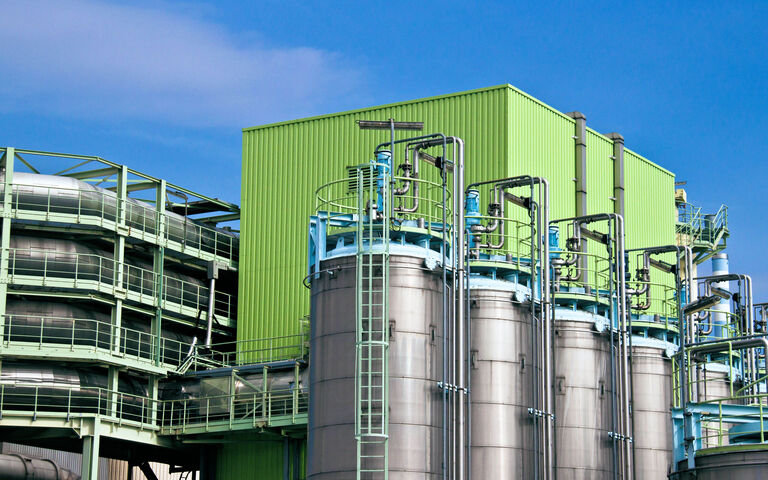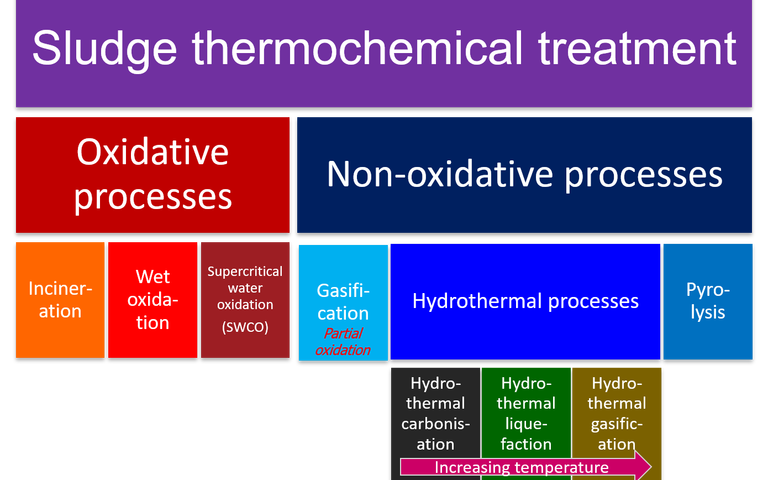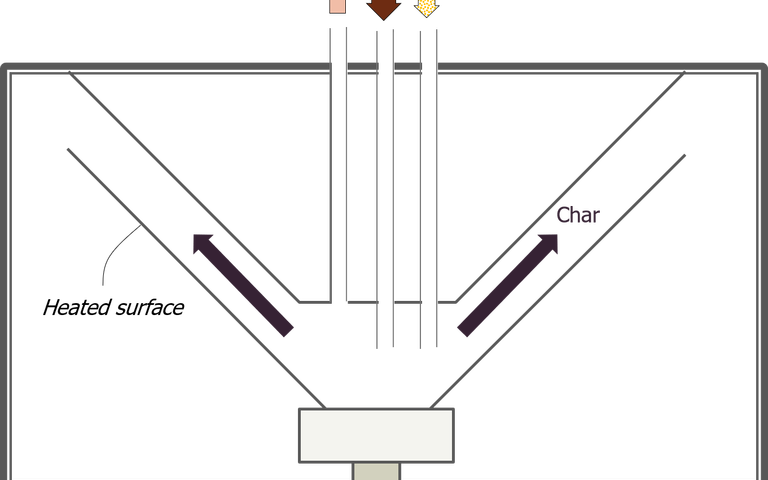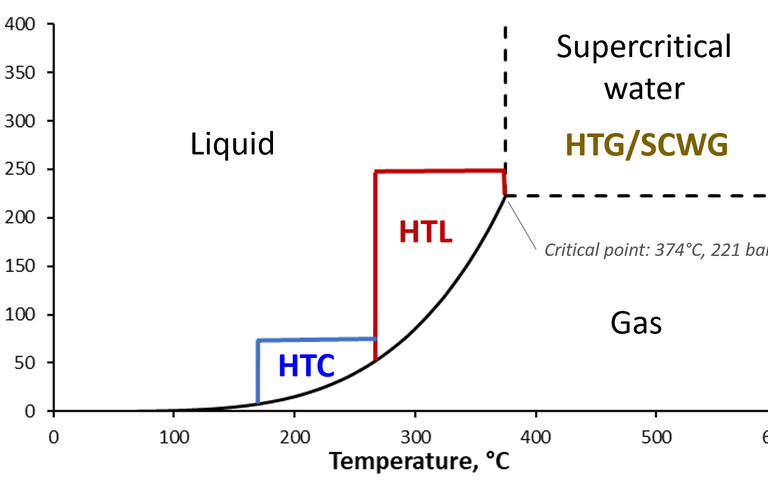
Sludge thermochemical treatment
An introduction to sludge thermochemical treatment methods
Your web browser is out of date.
Update your browser for better security, speed and to get the best experience on this website.
Hydrothermal liquefaction (HTL) of sewage sludge takes place generally at temperatures of 250–400 °C and pressures above 40 bar. The primary end product formed from the generated condensable gases is a highly viscous liquid (a bio-oil) used as either a pure chemical feedstock or an additive in diesel fuels. HTL has been has been extensively investigated for ‘cleaner’ biomass feeds, and specifically microalgae, but is less well developed than hydrothermal carbonisation for sewage sludge applications.

An introduction to sludge thermochemical treatment methods

Thermochemical methods are used for either degrading the sludge solids or pre-treating sludge upstream of anaerobic digestion

Various reactor configurations exist for sludge thermochemical treatment which vary in design, operation and application

An introduction to non-oxidative sludge thermochemical treatment methods

Hydrothermal sludge treatment employs elevated temperatures and pressures in wet conditions and in the absence of oxygen
A video to demonstrate the principles of the TerraNova® Ultra Hydrothermal Carbonization of sewage sludge.
Gasification is conversion at very high temperatures in a partial reducing atmosphere to generate a syngas product
Pyrolysis is the decomposition of organics at temperatures of 300-1300 °C in the absence of oxygen at atmospheric pressure
Hydrothermal processes employ elevated temperatures and pressures in wet conditions and in the absence of oxygen
Hydrothermal carbonisation converts sludge predominantly into a hydrochar solid product at temperatures of 180-300 °C
Hydrothermal gasification converts sludge to a hydrogen and/or methane-rich gas stream at temperatures up to ~550 °C
Oxidative methods for sludge thermal treatment comprise incineration, wet air oxidation and supercritical water oxidation
Non-oxidative thermochemical treatment of sewage sludge refers to treatment at elevated temperatures in the absence of oxygen
Thickening, dewatering and drying extract water from sludge to reduce the sludge volume
Sludge stabilisation − alkaline stabilisation, lime and solids dosing, plus anaerobic and aerobic digestion
Sludge is the main waste stream from the treatment of wastewater